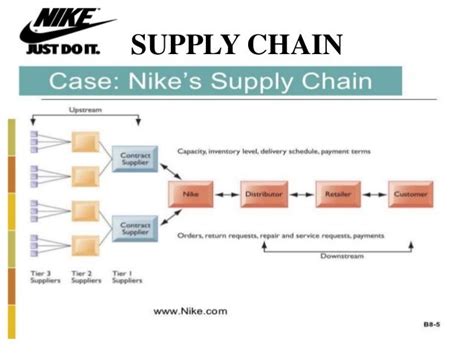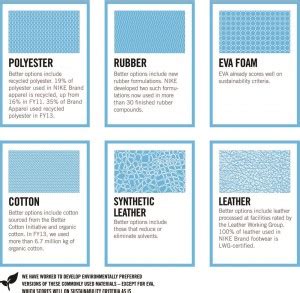importproducten nike | nike logistics supply chain importproducten nike According to the latest data we have from November 2020, Nike has 35 U.S. factories (30 focused on apparel), which makes up 6.4% of their total number of worldwide factories. Those 35 factories employ 5,430 workers, a measly 0.5% of Nike’s total workers . Louis Vuitton Dog Bag Charm and Key Holder Monogram Brown. Last Sale: $650. . $75. (13%) View Asks. View Bids. View Sales. StockX Verified. Condition: New. Our Promise. Product Details. Dimensions. 2H 1W. Material. Calf Leather. Retail Price. $435. Color. Brown. Hardware. Silver-tone. Product Description.
0 · who supplies nike with materials
1 · nike supply chain flow chart
2 · nike raw material suppliers
3 · nike manufacturing supply chain
4 · nike logistics supply chain
5 · nike imports and exports
6 · import nike shoes from china
7 · explain warehousing details for nike
These claims include things like spillages on carpets, dropped mobile phones, tablets and laptops, as well as water ingress that wouldn’t be covered under storm damage - it really does pay to have cover for those unexpected disasters!
According to the latest data we have from November 2020, Nike has 35 U.S. factories (30 focused on apparel), which makes up 6.4% of their total number of worldwide factories. Those 35 factories employ 5,430 workers, a measly 0.5% of Nike’s total workers .This story map aims to highlight Nike's business practices in factories around the world as well .
According to the latest data we have from November 2020, Nike has 35 U.S. factories (30 focused on apparel), which makes up 6.4% of their total number of worldwide factories. Those 35 factories employ 5,430 workers, a measly 0.5% of Nike’s total workers across their entire manufacturing footprint.

This story map aims to highlight Nike's business practices in factories around the world as well as their impact on the environment.Short Answer. Nike shoes are primarily manufactured in Vietnam, China, and Indonesia. They are designed and developed in the United States, however, and their materials are sourced from around the world. Nike operates a number of factories in these countries, as well as a few others, where they employ thousands of workers to assemble their shoes.
Nike relies on a broad swathe of Asian-based manufacturers throughout its supply chains. It also owns factories across China, Vietnam, Cambodia and others where their products are made. Nike’s supply chain is absolutely enormous – their products being crafted by over 1 million labourers in over 530 different factories and in over 40 nations.Nike, Inc. [note 1] (stylized as NIKE) is an American athletic footwear and apparel corporation headquartered near Beaverton, Oregon, United States. [6] It is the world's largest supplier of athletic shoes and apparel and a major manufacturer of sports equipment, with revenue in excess of US billion in its fiscal year 2022. [7] [8]
who supplies nike with materials
Nike’s supply chain functions around three core organizational principles: outsourcing to save costs, diversification to minimize risk and corporate social responsibility to manage its impact on the world it works in.

NIKE’s success story is a testament to the power of a great brand name, a catchy tagline, and strategic collaborations. From its humble beginnings importing Japanese running shoes to its domination of the athletic shoe market, NIKE has .The key to Nike’s efficiency is its low overhead manufacturing costs. Instead of owning and operating its own factories, Nike’s footwear division solicits the services of independent contract manufacturers located in fourteen countries around the world.
This case explores the evolution of Nike’s global product sourcing strategy, in particular ongoing efforts to improve working conditions at its suppliers’ factories.
NIKE moved ~900 million units through its supply chain last year. Its manufacturing network consists of over 700 factories in 42 countries.
nike supply chain flow chart
According to the latest data we have from November 2020, Nike has 35 U.S. factories (30 focused on apparel), which makes up 6.4% of their total number of worldwide factories. Those 35 factories employ 5,430 workers, a measly 0.5% of Nike’s total workers across their entire manufacturing footprint.
This story map aims to highlight Nike's business practices in factories around the world as well as their impact on the environment.Short Answer. Nike shoes are primarily manufactured in Vietnam, China, and Indonesia. They are designed and developed in the United States, however, and their materials are sourced from around the world. Nike operates a number of factories in these countries, as well as a few others, where they employ thousands of workers to assemble their shoes.
Nike relies on a broad swathe of Asian-based manufacturers throughout its supply chains. It also owns factories across China, Vietnam, Cambodia and others where their products are made. Nike’s supply chain is absolutely enormous – their products being crafted by over 1 million labourers in over 530 different factories and in over 40 nations.Nike, Inc. [note 1] (stylized as NIKE) is an American athletic footwear and apparel corporation headquartered near Beaverton, Oregon, United States. [6] It is the world's largest supplier of athletic shoes and apparel and a major manufacturer of sports equipment, with revenue in excess of US billion in its fiscal year 2022. [7] [8]
Nike’s supply chain functions around three core organizational principles: outsourcing to save costs, diversification to minimize risk and corporate social responsibility to manage its impact on the world it works in. NIKE’s success story is a testament to the power of a great brand name, a catchy tagline, and strategic collaborations. From its humble beginnings importing Japanese running shoes to its domination of the athletic shoe market, NIKE has .
The key to Nike’s efficiency is its low overhead manufacturing costs. Instead of owning and operating its own factories, Nike’s footwear division solicits the services of independent contract manufacturers located in fourteen countries around the world.This case explores the evolution of Nike’s global product sourcing strategy, in particular ongoing efforts to improve working conditions at its suppliers’ factories.
nike raw material suppliers

louis vuitton first copy belts online
louis vuitton belt meb
November 30, 2021. When installing 12V landscape lighting, you want to make sure you also install the right sized low-voltage transformer. Low-voltage transformers are devices that reduce a higher input voltage to a lower output voltage. Low voltage transformers are those that operate at 30 volts or lower.
importproducten nike|nike logistics supply chain


























